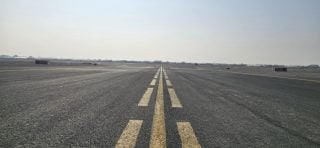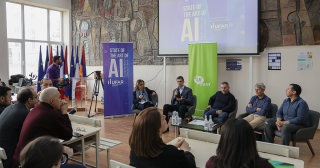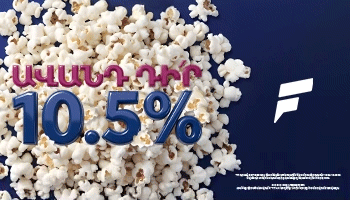
Agriculture in Armenia: the growing sector

With a little bit of quinoa, organic berries, and sun-dried fruits, Taline Kevonian, Artyom Tadevosyan, and Armberry are three Repat initiatives remarkably changing the landscape of agriculture in Armenia.
During her 3rd year of running and founding “Meline’s Garden”, Taline Kevonian took a trip to Mexico, Ecuador, and Colombia in 2016 to conduct further research on how quinoa, or the “pseudo grain” as she calls it, which has been present for centuries, was still positively impacting South and Central Americas.
“From the farmer to the processing plant,” Kevonian explains, “[farmers] are honoured that the grain has taken to the international market like wildfire. The people I met had no extra education, or better terrain, or any technological advancement that could have given them a leg up in the market. They cultivate this plant in the same manner that has been done for centuries. They work arduously during the season to reap the healthy and financial benefits of their hard work after the season.”
Eventually, Kevonian realized quinoa could add diversity to the ordinary Armenian diet, stating that the food supply and consumption statistics indicate that the dietary energy supply in Armenia is very low and not meeting population energy requirements. Thus, since quinoa contains vitamins A, E and B and is very rich in cellulose, calcium, magnesium, zinc, and iron, (as well as having much more protein than most grains), Kevonian hopes to promote nutritious food and healthy lifestyles in Armenia while introducing agricultural diversity.
Shifting gears from grains to fruits, we have Artyom Tadevosyan, a Repat from Russia who founded “Arevaham,” producing organic sun-dried fruits in the village of Armavir and exporting it to Russia since 2012; ultimately, planning to export to Europe and the U.S. and to include more Armenian products in Russian supermarkets. After seeing how many high quality foods were not being used effectively in Armenia, Artyom decided to repatriate in order to bring his experience with food production to Armenia. Spend just a few weeks in Armenia and already you’ll see the advancement and ubiquitousness and progression of food preservatives in for instance, jams, juices, etc. mirroring the potential growth possible for this sector.

That said, also in the realm of fruits we have “Armberry.” A joint stock company of Armenians seeking to make a difference through investing in a sustainable berry farm. “Armberry” was established in 2015 as a result of the growing demand for fresh berries worldwide and higher margins for high quality berries.
General director Harutyun Pakhchanyan says another important reason for creating Armberry was the open market niche with the absence of big competitors. Currently, the company has 12 hectares of land where the Armberry team plans to grow organic raspberries and blackberries mostly for the export market. This new and innovative company will be the first organic berry farm in Armenia. Their mission: to be the market leading company in Armenia by supplying high quality and organic soft fruits.
I asked all 3 Repat initiatives, why isn’t the agricultural sector more developed in Armenia? Well,
1) Lack of high quality experts and specialists in the field.
2) Lack of proper relationships between sellers and exporters and vice versa.
3) Low wages in the field which leads to lower demand and quality of production.
4) A lack of a clear system of rules and regulations.
5) Lack of investments.
6) Lack of experience in modern techniques/more sustainable ways of production.
7) Lack of organic fertilizers. “It is possible to find in Armenia some organic fertilizers, however the variety is not big and they are quite expensive. The other issue with fertilizers is that it is illegal to import them unless you have registered them with Ministry of Agriculture, which requires time and money,” Pakhchanyan discusses.
8) Lack of modern agricultural machinery for rent. There are only few rental options available with limited up-to-date technology and machinery at hand.
9) There is a necessity to involve insurance companies into agricultural sector, for insuring crops from hail, frostbite, etc.; however, according to Pakhchanyan, currently no Armenian insurance companies offer such services.
Tadevosyan mentioned the very popular, high quality, and in-demand cognac industry in Armenia in relation to this. Raising the question, what is the difference between the popularity of the cognac and brandy industry in Armenia in comparison to the lack of development in the agricultural sector, Tadevosyan discussed the heavy investments during the Soviet Union in the cognac industry, which lead to more specialists and experts adding to the value and quality of the cognac being produced.
Hence, the agricultural sector in Armenia also can be as developed as the cognac industry is, especially considering how popular vegetable and fruit conservation is in Armenia. All it takes is involvement and dedication.
Naturally, I had one final question to ask: What advice would you give to people interested in getting involved in the agricultural sector in Armenia?
“Make sure to speak with experts in this field before investing and develop a well-thought-out business plan to not allow for any reasons for blame later. Have a professional attitude towards it and be prepared for 5-6 years of heavy [but rewarding!] work, because this is not office work.” – Artyom Tadevosyan.
“You are your own worst enemy. Your success is only hindered by how far you want to reach. The same trials and tribulations encountered in the past, present, and future are the same ones that you would encounter anywhere, no matter the country. I suggest taking on a different approach to accomplish your goals when faced with a challenge.” – Taline Kevonian.
“I think there are many opportunities in this sector and it can be a very lucrative business; however, detailed and realistic research must be done before investing. Also, those who are new in this field, please keep in mind that this is a long term investment requiring patience since there might not be high profits the first year or two due to unpredictable situations.” – Harutyun Pakchanyan.
It’s important to keep in mind, the farms Kevonian, Tadevosyan, and Pakhchanyan work with are tended to by local villagers and planting, weeding, harvesting and processing is currently done with minimal to no technological equipment. Additionally, many farmers and companies have started to implement new technologies such as drip irrigation and fertigation which is a significant sign of progression and advancement in this sector.
All 3 of these Repat initiatives plan to continue on their agricultural paths in hopes of expanding the labor market on all stages while still being able to play a competitive role in the market. “We hope to see transformation from traditional to modern agriculture. We want to see more young and enthusiastic agricultural experts with relevant education, who would support farmers, develop new varieties and find cost effective and fruitful cultivation methods,” Pakhchanyan explains.
For a greener, fresher, healthier, more sustainable, more competitively driven, agriculturally plush, and prosperous Armenia.
Terez Sarkisyan























